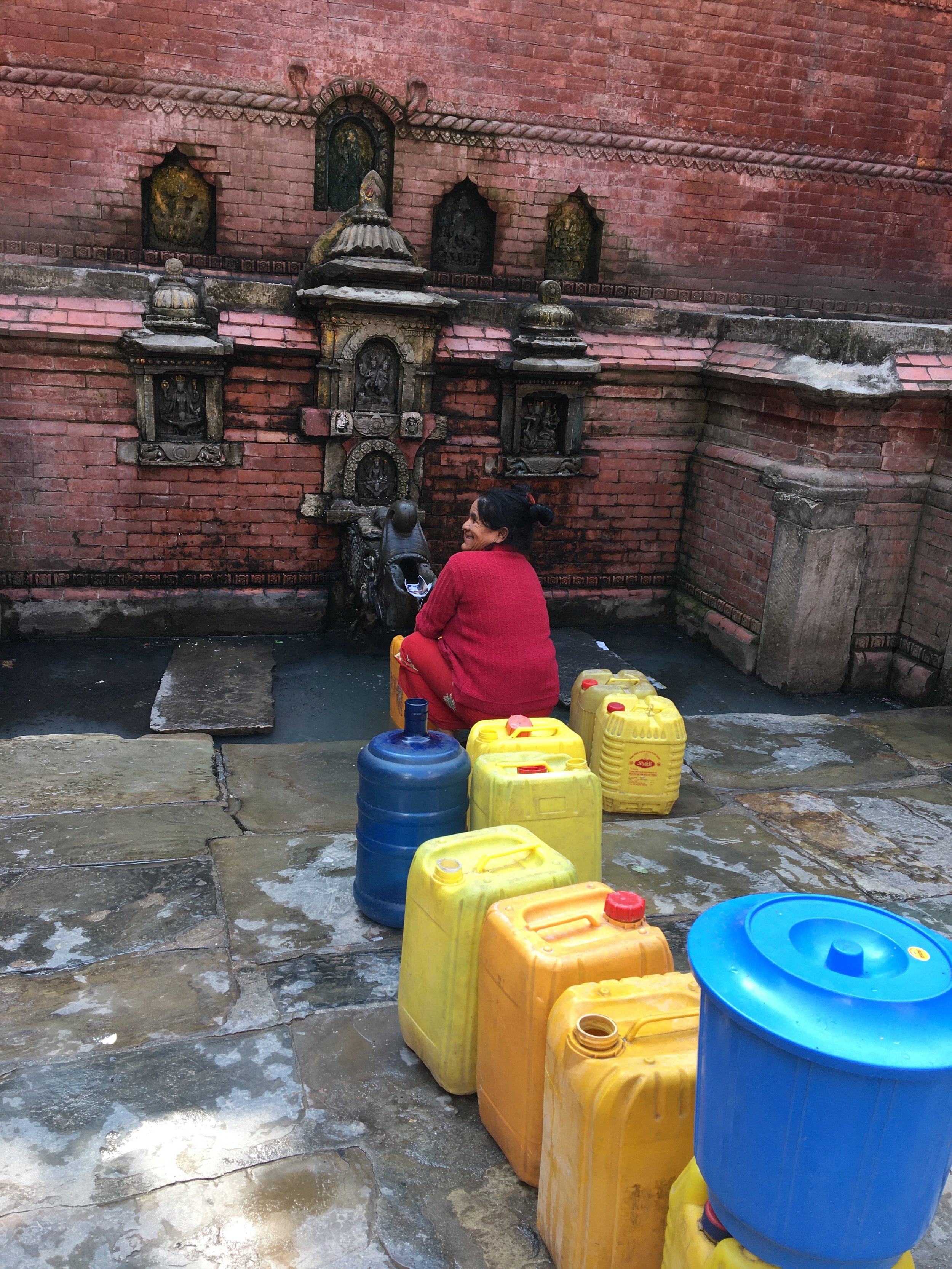Dr. Monalisa Maharjan is a research fellow with Heritage as Placemaking. She is interested in intangible heritage practices, heritage activism, and indigenous knowledge systems. Her project within HaP focuses on civic initiatives to restore and preserve hiti stepwells in the Kathmandu Valley.
Water sources and their accessibility have historically decided the rise and fall of civilizations around the world. The history of the origin of the Kathmandu Valley is rooted in a lake called the ‘Nagdaha’. As the lake drained, the subsequent aftermath formed a place for human habitation in the shape of a valley. Alongside the rivers, lakes, springs, and wetlands, the inhabitants of the valley, over time, developed a water system that would make its way to the inner cities.








One such water system is the hiti, a traditional and organic water filtration technique for the preservation of, distribution of, and access to water. As such, hiti is both a carrier and a marker of a technologically accomplished civilization. For several centuries, the Kathmandu Valley’s population depended on hiti for water for drinking, cleaning, and ritual use.
The earliest hiti dates back to the fifth century. It is located in Hadigaun, one of the ancient cities in Kathmandu. The other hiti from this period that is still functional is Manga Hiti in Patan. The use of hiti water continued until the 1970s, when the drinking water reached houses via pipeline, easing households’ access to water. Understandably and expectedly, over time, people relied less on hiti to meet daily water needs.
However, hiti is not just a mere water source but also a place to worship, a symbol of purity, and a basis of religious harmony. Hiti is not a stand-alone ‘thing’: it is a richly assembled architectural and cultural space too; a space—rectangular or square—surrounded by several structures representing deities and religious symbols. The spouts of the hiti always appear in odd numbers, from a single spout to as many as five. The only even hiti space is one in Balaju bais dhara, which has twenty-two spouts.
The hiti’s physical space consists of several deities representing various religions. A single hiti space hosts the Shiva linga, statues of Buddha, Chaitya, Narayana, and many more living together. As such, hiti is also a space of diversity, accommodation, and co-existence. Hiti is also a form of vernacular architecture, rendering unique artistic expression and human imagination. For example, stone spouts are inscribed with figures of various animals, itself a representation of the sentient beings, underlined by the principle of co-existence, combining with the figment of the artists’ imagination.
However, hiti has also served as a marker of difference. In the stratified Newar society, water has always been considered a potent carrier of caste-based ‘purity’. The water perennially flowing out of hiti was considered to be ‘pure’. Therefore, hiti has, on the one hand, historically helped meet household-based water needs in the city. On the other hand, it has also made visible the politics of access and hierarchy based on notions of ‘purity’ linked to caste and ethnicity. It is one’s social location based on caste that determines where one stands in the long queue in front of the water spout on a typical Saturday morning, for example.
Particularly since the 1990s, hiti has been drying or being buried under ‘modern’ commercial buildings and business complexes. Despite this ‘erasure’, local residents who grew up using hiti not just as a water space but also as a playground, continue to retain fond memories of the rituals of everyday life built around hiti as a physical, social and cultural space.
The continued dilapidation of hiti is yet to make inroads into the public sphere as a matter of discourse that would foment critical, necessary, and even ‘radical’ conversations about ‘preservation’, among other concerns. Old pictures of hiti when juxtaposed against their contemporary state provide a stark spectacle depicting how far hiti has fallen as a functional and cultural space.
One of the ironies of modern-day hiti is that those that remain that are deemed to be ‘alive’ and preserved are said to be so because they somehow stand decorated—with dacchi appa, or glazed bricks. But something very crucial is missing. The hiti are standing, but they hardly breathe. They are dried off of the very thing that is meant to keep them ‘alive’, keep them preserved—water. They look aesthetically pleasing, but they have run dry. As a result, vibrant markers of active cultural life, such as people filling traditional water pots (gagri) from the hiti, taking a shower, the loitering and playing of children, and women exchanging pleasantries as they go about their everyday life, have all been displaced to the margins of our memories. Such memories are instead replaced by the modern-day realities, depicted in painstaking visuals of a long queue of white and yellow plastic gallons waiting to be filled out of water spouts that are drying by the minute—itself a stark reminder and depiction of the concrete plasticity of ‘modern life’ and the ambiguous irony of hyper-modernist ambitions such as the ‘smart city’.
All photos and text © Monalisa Maharjan 2022
